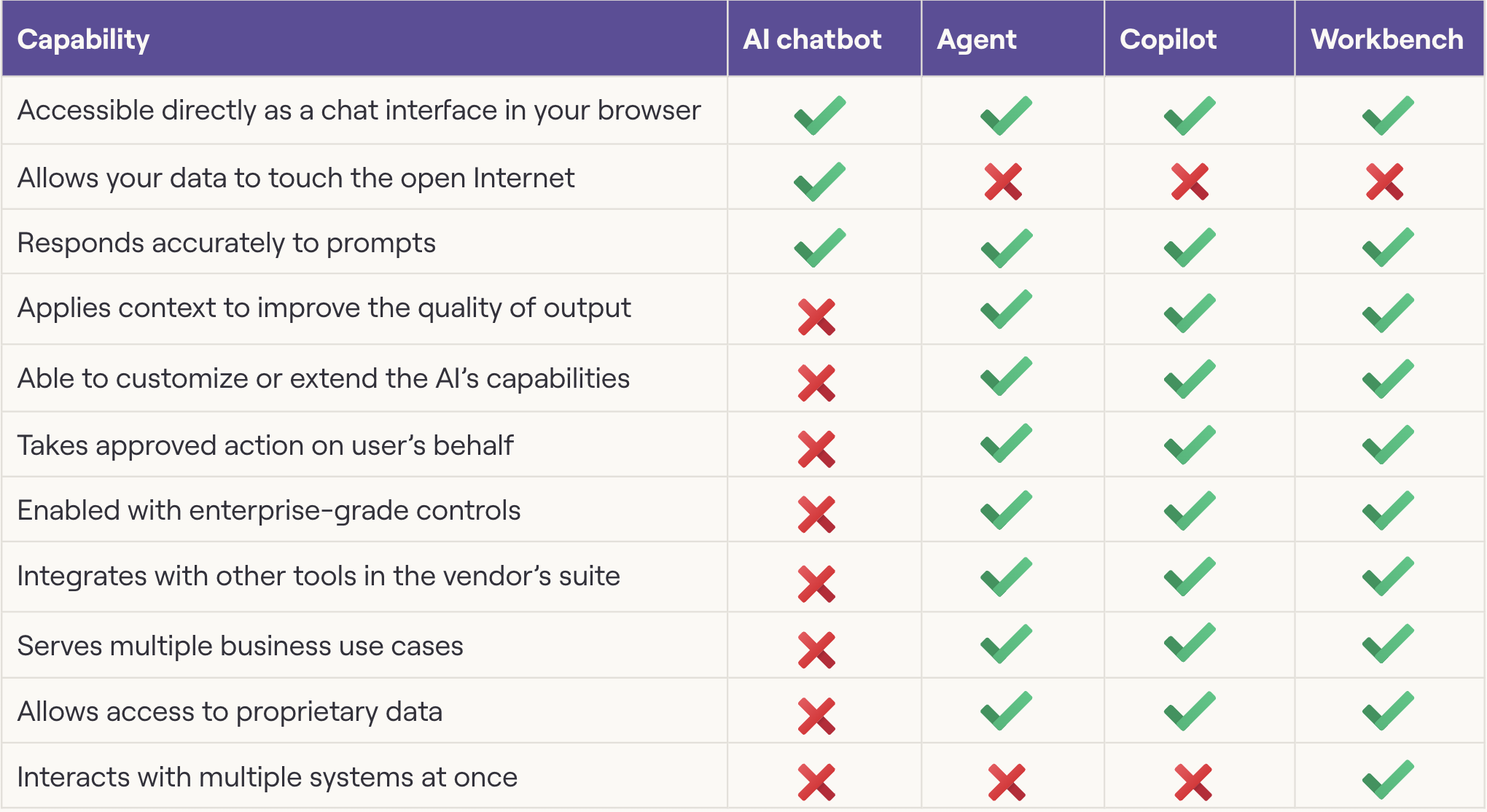As AI continues to mature, we’re beginning to see AI-powered capabilities fall into distinct categories that serve different functions across the enterprise. From help tools like copilots that assist users, to conversational bots providing AI-driven chat support, and efficiency-focused agents that automate complex tasks, these categories reveal the unique ways AI is transforming business operations.
With things moving quickly, there’s often confusion about the different types of AI tools—particularly chatbots, copilots, and agents—and we’re frequently asked where Tines Workbench fits into this landscape.
In this blog post, we’ll examine these AI tool types, consider their core functionalities and best use cases, and explore how Workbench compares to other tools in the market.
Chatbots
Users most commonly interact with chatbots in the form of customer service bots on websites. As you navigate through websites, it’s pretty common to see a chat bubble pop up in the bottom right corner, whether you’re shopping for clothes or exploring the latest tech platform.
Think of a chatbot as a virtual conversation partner. They can answer questions and help you complete basic tasks. They rely on programmed information and therefore lack context.
But as you narrow down the focus of chatbots, they can be further categorized:
Basic chatbot: follows pre-defined rules with scripted responses
AI chatbot: uses artificial intelligence to understand inputs and respond in a more natural way. Bots like ChatGPT are much more than a customer service bot. Innovations like these have redefined the way we think about traditional chatbots.
Agents
Agents go a step further than chatbots. They operate autonomously in the background, making decisions and taking actions, with human interaction where needed.
Agents can be customized with prompts to run independently. By giving it a persona, setting up plugins, and providing it with available tools and functions, it can use reason to devise efficient ways to reach its goals.
What separates an agent from a chatbot? One such example could be a home lighting system that adjusts its brightness based on the level of darkness outdoors. Typically, lights can come on at certain times of the day, but what happens when an unexpected thunderstorm rolls through? That agent can apply reason when deciding its next course of action.
Copilots
A recent development in these advanced AI technologies is copilots. Copilots are viewed as digital teammates who provide suggestions and automate repetitive steps. What makes copilots unique from chatbots or agents is that they work side-by-side with the user and rely on user interaction.
They are also usually product-scoped, meaning they are aligned to a specific product or task. Copilots can integrate with your data and provide context-relevant outputs.
Some impressive examples of copilots in the market are Microsoft Copilot, Jasper, and Joule by SAP. Microsoft Copilot, for example, can be embedded within your entire Microsoft product suite and give you insights pulled from tools like Defender XDR or Intune. Some of these tools have recently started integrating with third-party systems, like Joule by SAP and Microsoft.
Tines Workbench
Tines Workbench is an AI chat interface that enables users to incorporate data from across their stack and take action from a single place.
Instead of switching context between platforms, you can work within Workbench to investigate an incident, manage a case, and even gather additional information and take action based on the context from other platforms. In Workbench, authorized users can instruct AI to carry out actions on their behalf, ultimately giving the user control over the next steps.

When considering chatbots, agents, and copilots, keep the following in mind:
Does it work for your business use cases??
Is the LLM trustful and transparent?
Can it work beyond the vendor’s own tools in a way that fits your tech stack?
Each AI tool provides different benefits for organizations, and it’s important to consider your company’s goals and objectives during evaluation to determine which one can provide the most meaningful impact.
Learn more about Tines Workbench